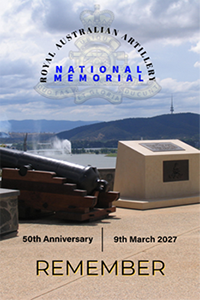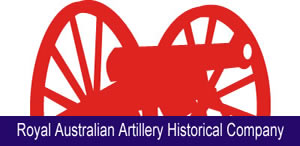|
||||||||||||||||||||||||||||||||||||||||||||||||||||||||||||||||||||||||||||||||||
| Have a Question / Feedback ? | Submit- only questions about this website will be answered | Search Our Site |
|
| Books and Book Reviews | ||||||||||||||||||||||||||||||
 |
Book of Days is a limited edition pictorial coffee table styled hard covered book that provides a pictorial overview of the history of the Royal Regiment of Australian Artillery from 1871 to 2021
|
|||||||||||||||||||||||||||||
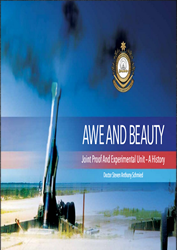 |
|
|||||||||||||||||||||||||||||
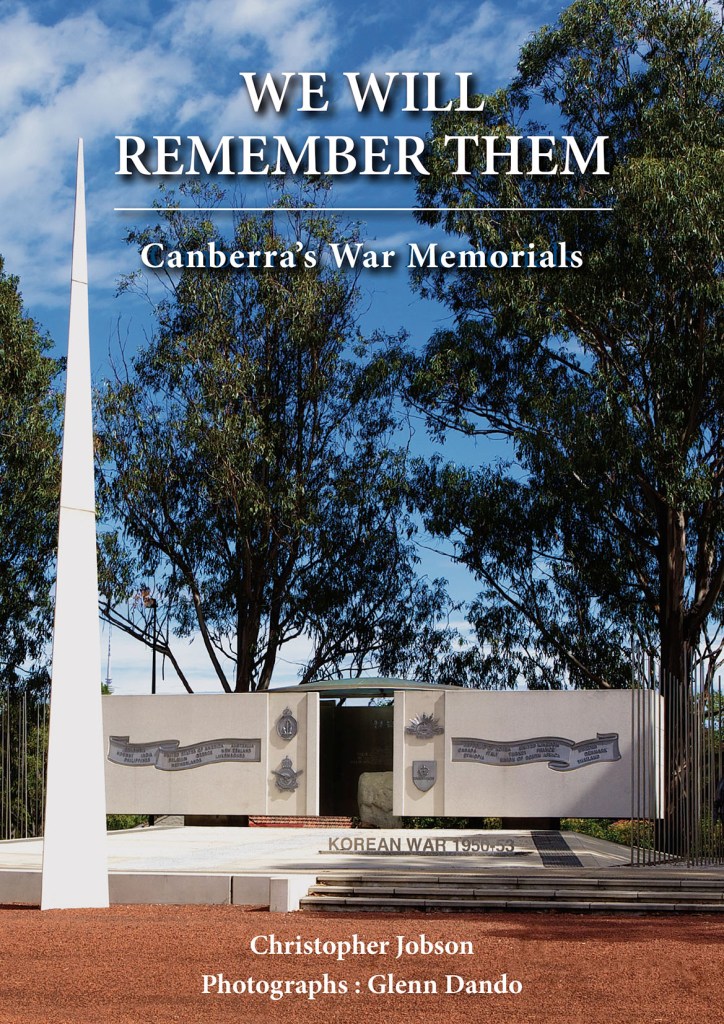 |
WE WILL REMEMBER THEM - CANBERRA'S WAR MEMORIALS
From: Gai Brodtmann, Federal Minister for Canberra This book is a wonderful asset for the Canberra community. It will allow Canberrans, and visitors to the region, to appreciate the considerable involvement of our community in the defence of our nation, as shown through our many memorials. Although I have lived in Canberra for more than 25 years and have an interest in the role of the Canberra region in Australia's defence forces, some of the memorials in this book were unknown to me. I believe there will be many Canberrans who, like me, will discover more about Canberra's connections to our service history through this wonderful book. The following is the Book's Foreword, written by historian Peter Stanley: Australia arguably has more war memorials per capita than any comparable nation, and Canberra has the greatest concentration of memorials in Australia. Our City is the location of memorials of several kinds. We have memorials dedicated to Canberrans who have served and died. As the Nation’s Capital many of the memorials in this guide bear the word ‘national’. Some memorials reflect other nations’ relationships with Australia. We are fortunate to have in our City these reminders of our shared past. While (as this guide tells us) more memorials are planned, the only obvious gap is a memorial to those who suffered in the frontier wars that saw the Limestone Plains transformed from indigenous hunting lands to pastoral paddocks and in turn to national capital. I hope that this book will stimulate an awareness of that absence. These memorials reflect a common human desire to remember the past, and to commemorate war’s effects, in deaths and in other sacrifices. This book offers a superb opportunity to learn more of them, and through them to reflect upon what war has meant to Australia and its people. Professor Peter Stanley The book sells for $19.95. Purchase Online
|
|||||||||||||||||||||||||||||
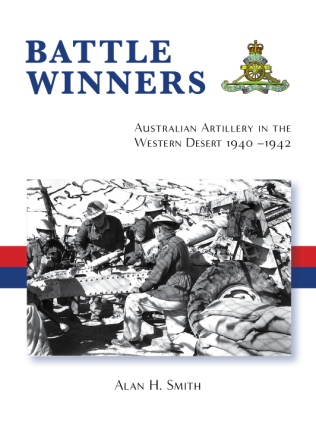 |
Battle Winners - Australian Artillery in the Western Desert 1940 - 1942
A book by Alan Smith who joined the Royal Australian Artillery in 1951. He was commissioned in 1954 and his service includes time with the British and Canadian Artillery. Alan retired in 1969. Alan Smith has written extensively on Australian Artillery history and was the assistant then editor of Cannonball the Journal of the Royal Australian Artillery Historical Company from 1993 to 2013. Battle Winners is a vibrant and detailed account of the extraordinary battles of the Australian 6th and 9th Division six field artillery regiments against the Italian Army and Afrika Korps in the unforgiving terrain of the Western Desert from 1940 to 1942. It traces the 6th Division’s advance to Benghazi, the legendary Siege of Tobruk and their ‘bush artillery’ of the 9th Division, closing with the bloody finale that was Second El Alamein against a battle-hardened foe. The book describes the organisation, equipment, development and artillery tactics of both sides in meticulous detail. General Montgomery’s appointment in August 1942 proved the turning point and the Eighth Army artillery rose to become the ‘queen of battles’ at the climactic El Alamein battle. Battle Winners includes a Roll of Honour, casualty lists, maps and photographs and includes a Foreword by Major General S. N. Gower, AO, AO(Mil). For further information and details on how to purchase this book online - Click Here. Alan Smith joined the Royal Australian Artillery in 1951. He was commissioned in 1954 and his service includes time with the British and Canadian Artillery. He retired from the Army in 1969 and was a senior BHP executive when he retired in 1992. Alan Smith has written extensively on Australian Artillery history and was the assistant then editor of Cannonball the Journal of the Royal Australian Artillery Historical Company from 1993 to 2013. |
|||||||||||||||||||||||||||||
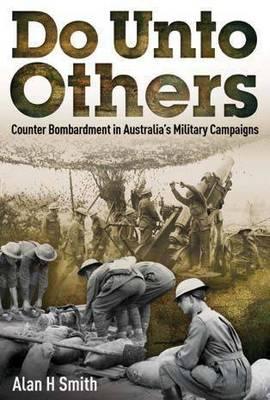 |
Do Unto Others -
Counter Bombardment in Australia’s Military Campaigns Review by: Major General (Retired) Tim Ford, AO The Australian Army History Collection. Author Alan H Smith The publisher has arranged a Gunners discount as below:
At its launch in August by Major General Paul Symon, Deputy Chief of Army and the senior Gunner serving in an Army appointment today, said “Alan’s book differs from the usual titles produced out of the Australian Army History Unit in that it not only discusses the history of Australian campaigns utilising the practice of counter battery fire - it also seeks to make the technical aspects of this complex science understandable.” This describes this publication well. This book not only fills a gap that existed in the record of Australia’s military campaigns by clearly describing the history of counter bombardment – the location, destruction or neutralisation of enemy artillery and mortars – and its impact across campaigns involving Australia from before World War I to South Vietnam, but it also catalogues the fascinating military science behind the development and application of artillery and counter bombardment. Over some twenty-two chapters, the author methodically takes the reader from the first use of artillery and indirect fire, through the technical development of the associated survey and locating practices, principally by the Royal Artillery on the Western Front in 1915-18, to its use in other theatres during World War 1. A most interesting statistic is how advances in science and artillery tactics contributed to a very significant drop in Western Front casualty rates in 1918. The story goes on to describe counter bombardment’s major contribution during the campaigns of World War II, and subsequently in Korea, Borneo and South Vietnam. The author concentrates on the involvement of Australians in the process and the impact within Australia’s operations, however due credit is given to the principal role played by Britain in the development of the skills and techniques, and to the contribution of other allies such as Canada, France, and the United States and the responses by opposing armies.The book is very well researched and laid out. It is replete with photographs, maps, charts, tables and diagrams that amplify the description. In addition to well developed endnotes, bibliography and index, it includes 10 appendices that clearly describe artillery procedures, organisations and structures that assist the reader to appreciate the intricacies of artillery and locating practice. I think the work would have benefitted from a glossary listing the many abbreviations and acronyms throughout the book – although always described initially, their use is prolific and such a list would have been a helpful reference, even to those familiar with many of the terms. What is so interesting about this publication is the manner in which the various contributors to the counter bombardment battle over the years are identified and explained. For example, I found the description of how the relationship and procedures developed in 1916-17 between the observers from Royal Flying Corps (and later the Australian Flying Corps), the air liaison officers at the airfields, and the Counter Battery Staff Offices, intriguing - and then how this converted to doctrine of further interest. The continued development of these techniques over the years to the procedures that were carried out within the Fire Support Coordination Centre (FSCC) at the 1st Australian Task Force in South Vietnam some 50 plus years later is also explained. Over time, the counter bombardment process has involved many different disciplines – survey, flash spotting, sound ranging, artillery intelligence, radar, air observation, communications, calibration of guns, meteorology, camouflage and concealment, and even the use of unattended ground sensors. All these skills and many of the Australian units that have employed them on operations are addressed in “Do Unto Others”. The importance of neutralising the enemy’s offensive capability remains critical on today’s battlefield where we see that the Gunners still providing key force protection and locating capabilities, such as surveillance and target acquisition and counter rocket and mortar capabilities. Today’s warriors and military historians would gain much understanding of the battlefield by considering the counter bombardment developments and processes detailed in this publication. This is not a book that one will pick up and read in a single sitting. The reader will need to concentrate to gain full value from the information packed into the book. The author, Alan Smith, describes himself as Army historian. This manuscript is obviously a labour of love. Alan has drawn upon his service as a Reservist with the RAA and on attachments with the Royal Artillery and Royal Canadian Artillery to build his extensive knowledge of artillery history and heritage and to subsequently research and publish on Gunnery. In addition to editing several RAA biographies, he has published a manuscript in 2008 titled “Gunners in Borneo –Artillery during confrontation 1962-66” and he is currently the editor of the RAA Historical Company’s periodic journal “Cannonball”. September 2011 |
|||||||||||||||||||||||||||||
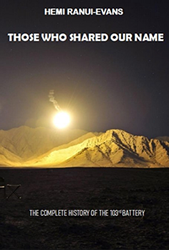 |
THOSE WHO SHARED OUR NAME – The Complete History of the 103rd Battery Gunner Hemi Ranui-Evans, a current serving member of the 103rd Battery - 8/12 Regiment, has authored, the soon to be released as a book, ‘Those Who Shared Our Name – The Complete History of the 103rd Battery. The book consisting of 184 pages is a detailed history of the 103rd Battery from its beginning on 6thMarch 1916 to the current day and provides a wonderful overview and insight of the Battery. Congratulations to Gunner Hemi Ranui-Evans on a job so very well done. Hemi has authorised the advance release of the book in Book Flip format to both the Australian Artillery Association and the Royal Australian Artillery Historical Company for which we are very grateful. Below is a link to a Book Flip version of the book which is also accessible via the Australian Artillery Association and Royal Australian Artillery Historical Company websites. Details on how to purchase a copy of the book once published will be advertised when known. Again, congratulations and thank you Gunner Hemi Ranui-Evans! https://www.australianartilleryassociation.com/publications/those_who_shared_our_name/Those-Who-Shared-Our-Name/index.html?fbclid=IwAR0tSCx65ktws6lpf_Pu2Rxxnj4JPeJoCom8RHriWmQjdtdEDLQzSqX_4Cs |
|||||||||||||||||||||||||||||
Everywhere Whither Right and Glory Lead |
||||


